#thinking through fashion by rocamora
Text

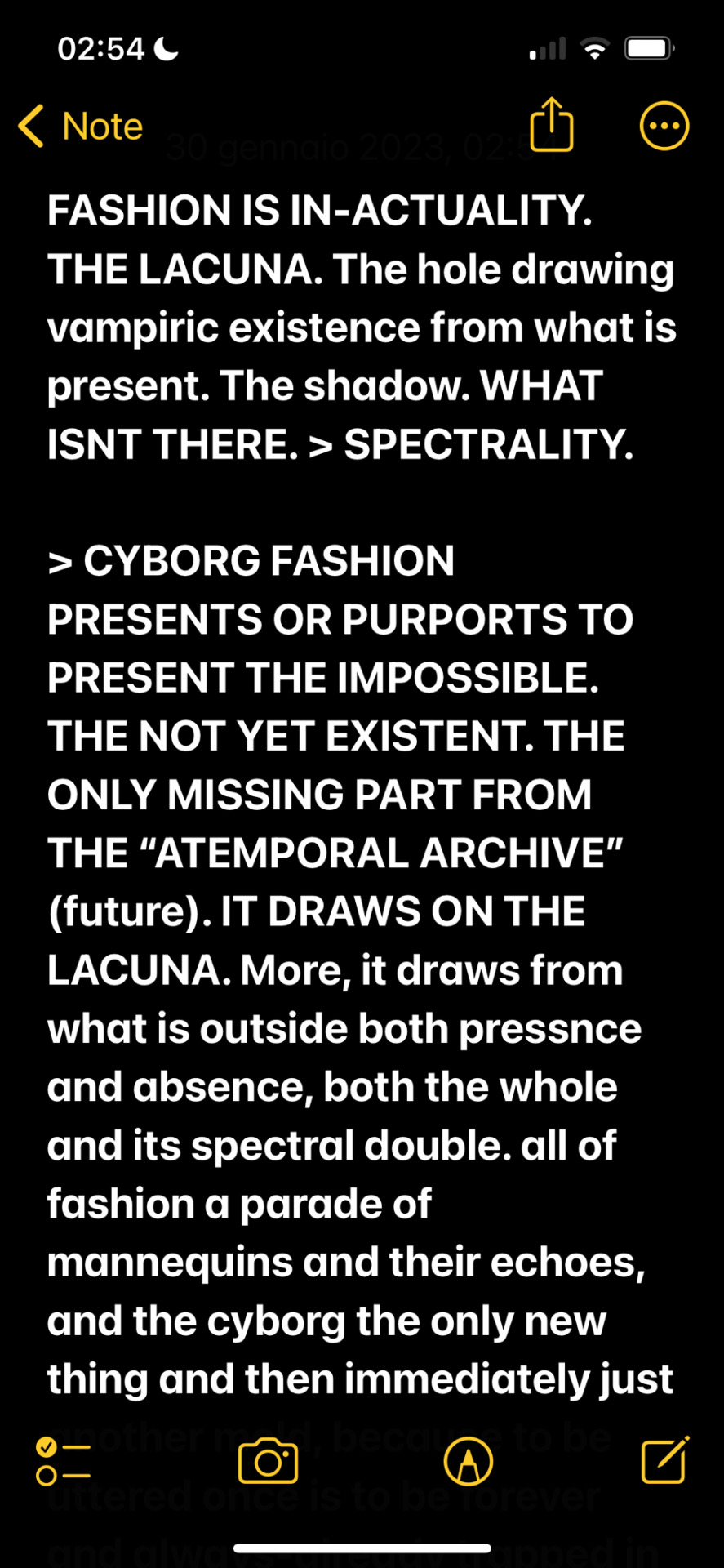

they don’t know im writing thesis notes in the club
#sources btw are specters of marx obv. baudrillards fashion or the spectacle of the code.#cyborg manifesto obv but also the essay the promises of monsters .#a book called the 7 beauties of science fiction which i HIGHLY recommended as it slaps start to finish#& i dont rmr where the quote about fashions ‘excessive self-devouring quality’ is from but im pretty sure the benjamin chapter of#thinking through fashion by rocamora#personal#words
12 notes
·
View notes
Text
just found 1 Granary's book list of fashion history and theory! i went through and found some pdf versions or excerpts for some of the books on the list:
The Fashion System by Roland Barthes
Experimental Fashion Performance Art, Carnival and the Grotesque Body by Francesca Granata
Fashion at the Edge: Spectacle, Modernity, and Deathliness by Caroline Evans (intro and an excerpt) and preview
Fashion-ology by Yuniya Kawamura
Inside Subculture: The Postmodern meaning of Style by David Muggleton
Adorned in Dreams: Fashion and Modernity by Elizabeth Wilson
Thinking Through Fashion: A Guide to Key Theorists by Agnès Rocamora and Anneke Smelik
#never been so excited to read again omg!#I wish I could have found the pdfs for the others because they seems soooo interesting#ok but how to become a fashion sociologist 🧎🏽♀️#sucks that all these are western :(#except for one
441 notes
·
View notes
Note
Fashion history is intrinsically linked to the social and economic climates of the regions. It's impossible to separate fashion history from the attitudes and beliefs of those who had a part in creating it. Nazi uniforms were designed to be attractive as a form of propaganda - uniforms impact on fashion regularly (from colour to decoration to shape). If someone sympathies with a group it will influence them. How could it not be important? I think you've put it well.
For anyone interested in fashion and it’s relationship with culture, I’d highly recommend A Cultural History of Fashion in the 20th & 21st Century by Bonnie English as a good starting off point. It’s not the most in depth guide, but it is an excellent introduction to social fashion history.
I personally haven’t read it but I’ve read positive reviews of Thinking Through Fashion: A Guide to Key Theorists by Agnes Rocamora and Anneke Smelik.
Fashion is part of the daily air and it changes all the time, with all the events. You can even see the approaching of a revolution in clothes. You can see and feel everything in clothes. - Diana Vreeland
What you wear is how you present yourself to the world, especially today when human contacts go so fast. Fashion is instant language...I've realized that fashion is a very powerful instrument that gives you access, lets you tap into people, allows you to transmit ideas and shape opinion. - Miuccia Prada
#anonymous#asks and such#fashion history#fashion history is so overlooked when it comes to cultural studies#i feel like that has been changing recently which is great#Anonymous
290 notes
·
View notes
Text

Barad, K. (2007). Meeting the universe halfway: Quantum physics and the entanglement of matter and meaning. Durham, NC: Duke University Press.
Bennett, J. (2010). Vibrant matter: A political ecology of things. Durham, NC: Duke University Press.
Blue, S., Shove, E., Carmona, C., & Kelly, M. P. (2016). Theories of practice and public health: understanding (un)healthy practices. Critical Public Health, 26(1), 36–50. https://doi-org.proxy-remote.galib.uga.edu/10.1080/09581596.2014.980396
Bourdieu, P. (1984) Distinction: a social critique of judgement and taste. London: Routledge.
Brown, S., Siegel, L., & Blom, S. (2020). Entanglements of matter and meaning: The importance of the philosophy of Karen Barad for environmental education. Australian Journal of Environmental Education, 1-15.doi:10.1017/aee.2019.29
Chakravartty, P., Kuo, R., Grubbs, V., & McIlwain, C. (2018). #CommunicationSoWhite. Journal of Communication, 68(2), 254–266. doi:10.1093/joc/jqy003
Corrigan, P. (1997). Theoretical approaches to consumption. In The sociology of consumption: An introduction (pp. 17-32). London: SAGE Publications Ltd. doi: 10.4135/9781446216903.n2
Danius, S., Jonsson, S., & Spivak, G. (1993). An Interview with Gayatri Chakravorty Spivak. Boundary 2, 20(2), 24-50. doi:10.2307/303357
Gordon, G. F. & Hill, C. (2015). Sustainable fashion: Past, present and future. Bloomsbury Academic.
Goodchild, P. (1996). Deleuze & Guattari: An introduction to the politics of desire. London: Sage.
Grosz, E. (2008). Chaos, territory, art: Deleuze and the framing of the earth. New York, NY: Columbia University Press.
hooks, b. (2010). Teaching critical thinking: Practical wisdom. Routledge.
Jackson, A., & Mazzei, L. (2012). Michel Foucault. In Thinking with theory in qualitative research: Viewing data across multiple perspectives. New York, NY: Routledge.
Jackson, A. Y., & Mazzei, L. A. (2013). Plugging one text into another: thinking with theory in qualitative research. Qualitative Inquiry, 19(4), 261–271. https://doi.org/10.1177/1077800412471510
Kasser, T. (2002). The high price of materialism. Cambridge, Mass.: MIT Press.
Klepp, I.G. & Laitala, K. (2014). Consumption studies: the force of the ordinary. In K. Fletcher & M. Tham (Eds.), Routledge Handbook of Sustainability and Fashion (pp. 121-130). Taylor & Francis Group.
Loehlin, J. (1999). From rugs to riches: Housework, consumption and modernity in Germany. Oxford: Berg.
O’Neil, J. K. (2018). Transformative sustainability: Learning within a material-discursive ontology. Journal of Transformative Education, 16(4), 365–387. https://doi.org/10.1177/1541344618792823
Peattie, Ken. (2010). Green consumption: Behavior and norms. Annual Review of Environment and Resources, 35, 195-228. https://doi.org/10.1146/annurev-environ-032609-094328
McIntyre, M. P. (2019). Shame, blame, and passion: Affects of (un)sustainable wardrobes. Fashion Theory. https://doi.org/10.1080/1362704X.2019.1676506
Pellandini-Simányi, L. (2014). Consumption norms and everyday ethics. Palgrave Macmillan.
Princen, T., Maniates, M., & Conca, K. (2002). Confronting consumption. MIT Press.
Reckwitz, A. (2002). Toward a theory of social practices: A development in culturalist theorizing. European Journal of Social Theory, 5(2), 243–263. https://doi.org/10.1177/13684310222225432
Shove, E. (2014). Putting practice into policy: reconfiguring questions of consumption and climate change. Contemporary Social Science, 9(4), 415-429. https://doi.org/10.1080/21582041.2012.692484
Smith, W. (2003). Consumption and the making of respectability, 1600–1800. Routledge.
Stigler, G., & Becker, G. (1977). De Gustibus Non Est Disputandum. The American Economic Review, 67(2), 76-90. Retrieved November 28, 2020, from http://www.jstor.org/stable/1807222
Strasser, S. (2003). The alien past: Consumer culture in historical perspective. Journal of Consumer Policy 26, 375–393. https://doi.org/10.1023/A:1026331225908
Strasser, S. (1982). Never done: A history of American housework. Pantheon Books.
Sullivan, A. (2016) Karl Marx: Fashion and capitalism. In Rocamora, A., & Smelik, A. (Eds). Thinking through fashion: A guide to key theorists. London: I.B. Tauris.
Tynan, J. (2016) Michel Foucault: Fashioning the body politic. In Rocamora, A., & Smelik, A. (Eds). Thinking through fashion: A guide to key theorists. London: I.B. Tauris.
Venkatesh, A. (1995). “Ethnoconsumerism: A new paradigm to study cultural and cross-cultural consumer behavior” in Costa, J. A. and Bamossy, G.J. (eds) Marketing in a Multicultural World: Ethnicity, Nationalism, and Cultural Identity, (pgs. 26–67) Thousand Oaks, Ca., Sage Publications, Inc. https://www.researchgate.net/publication/228528725_Ethnoconsumerism_A_New_Paradigm_to_Study_Cultural_and_Cross-Cultural_Consumer_Behavior
Warde, A. (2005). Consumption and Theories of Practice. Journal of Consumer Culture, 5(2), 131–153. https://doi.org/10.1177/1469540505053090
Woodward, S. (2007). Why women wear what they wear (English ed., Materializing culture). Oxford; New York: Berg.
Zeynep, O.E., Atik, D., & Murray, J. B. (2020). The logic of sustainability: Institutional transformation towards a new culture of fashion. Journal of Marketing Management. https://www.tandfonline.com/doi/abs/10.1080/0267257X.2020.1795429
0 notes
Photo
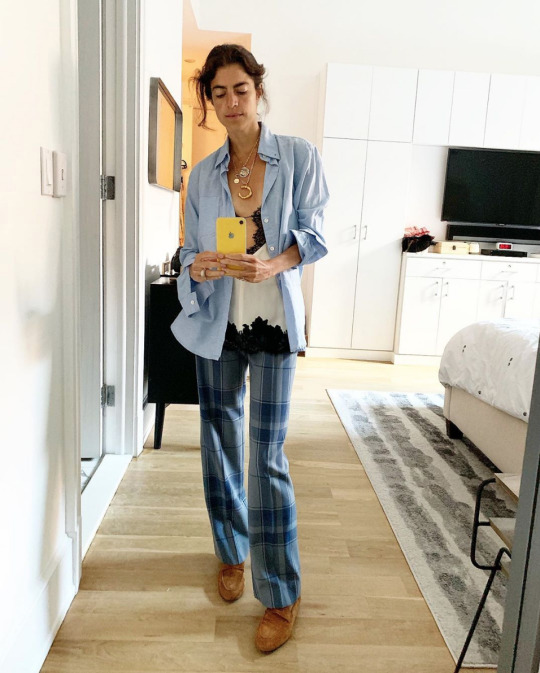

First Photo courtesy of Leandra Cohen, found here.
Second photo courtesy of Julien Tell & Highsnobiety.com, found here.
As someone who works in the fashion industry as well as runs a fashion blog, these articles were very interesting to me.
Starting with the top photo, when reading the article by Agnes Rocamora, several bloggers came to mind. One, that was present on the slides in class was Chiara Ferragni, who’s blog, The Blonde Salad, is well known. But in looking at those who push the boundaries of fashion and blogging, I thought of Leandra Cohen, founder of Man Repeller, a blog she started in 2010 while in college. She describes the blog as amorphous, with a desire to not take oneself, and subsequently, fashion, too seriously. She further cites the long-held stereotype that women who are interested in fashion are often thought of as unintelligent, but Cohen firmly shatters that through her unique content and writings. As Rocamora talks about, technology coupled with fashion (i.e. blogging) frees women from strict gender norms and conformity, and allows for changing and experimentation (Rocamora, 2011). In her photo here, from Cohen’s Instagram, she poses in front of a mirror wearing a very unique and unexpected outfit. A lingerie style top is layered underneath a classic blue button-up, which stands alongside plaid pants, loafer-type shoes, and chunky jewelry. As someone who has worked as a personal stylist, this is a difficult outfit to put together, much less pull off well. And while Cohen may be thin, she does not fit the traditional beauty standards by any means, but she utilizes it to her advantage in her clothing and through her blog. She, as well as her style, is well removed from conventional ideals that are stiff, tired, and incredibly outdated and narrow. As the article also talks about, the aspect of taking the photo in a mirror is something to think about. She explains that this practice of taking a self-portrait allows the woman to frame herself the way she wants, creating disruptive images that put the power in the hands of the female, rather than the male gaze (Rocamora, 2011). Women craft the meaning of the photo they want to. Cohen is able to build the style she wants by taking control of how she is framed and viewed through her social media posts.
The second photo I found from a popular men’s streetwear, sneaker, and music website called Highsnobiety.com that I frequent. They have substantial photo journals of street style from fashion weeks and events across the country, and do a brilliant job illustrating worldwide trends and what people of all generations, occupations, and places wear. They capture average, everyday people on the streets heading to these events, promoting the “anti-establishment” trend that is talked about in Rhodes’ article, “The Elegance of the Everyday”. Street style for fashion events like these have become incredibly popular and important, and often show off everything from wild costumes to classic looks that give a sense for the breadth of fashion and how it is expressed by each special personality. This photo, taken by Julien Tell, shows two men presumably walking the streets during Milan’s menswear fashion shows for Spring/Summer 2020. Both have a large number of tattoos, with many reaching onto their faces, hands, and fingers. The fashion itself is important to note as well - the figure on the right is quite literally wearing chaps, seemingly evoking a rebellious version of a spaghetti western film star. Both are on-trend with the tiny sunglasses. The cut-off vest is very in line with street style trends of utilitarianism, vintage styles, and androgyny. This image displays how the model is expected in fashion photos, but those supposedly unsuspecting people on the street present a detour from that glamorous perfection, with these non-models bringing a sense of their personal style and personality to their look, creating something almost anti-runway (Rhodes). They also have the ability to stand in opposition to a glossy magazine ad with a gorgeous model that is staged and flawless - the alternative flawed-yet-unique nature of non-models allows them to be free of the traditional viewing practices of fashionable people and fashion (Rhodes). The intersection of an average person doing something mundane (like walking) while wearing interesting clothes is captured through a camera lens and given a fresh perspective that seems to open the boundaries of what fashion could be. While it may not be an outfit one would really wear out on a day to run errands, it demonstrates the expressive power of fashion and how it intersects with being photographed and the act of photographing oneself.
#street style in milan#being photographed and photographing yourself#fashion and technology#the power of the ordinary#non-models vs. models#changes in perception of street style fashion#self-perception through fashion
0 notes
Photo

Fashion photography is for the rich and famous. Sucessful fashion photography usually does entail a high profile brand, model, or celebrity. Let’s take this iconic photo of Audrey Hempburn for example. Almost everyone has seen this photo or have heard of Audrey Hepburn. However, I dont think that the term fashion photopgrahy excludes pictures that promote low end products. Today, there are clothing created from used recycled material that can be photographed and advertised for sales purposes. I find this to be considered success as well, in more ways than one. Although Kelly Slater modeling his recycled clothing may not land itself in the same category of Gigi Hadid modeling hand bags, both bring positivity into the world through savy, eco friendly teqniques or prestige and popularity respectively. Author KateRhodes touches upon the type of fashion photography that deals with the every person and norms - “the unflattering and the flawed, and which engages non-professionals would seem to be a reflexive and historically significant ‘intervention’ in fashion photography, a sign of life that eclipses the alienation and anxieties associated with the aspirations for perfection promoted by a capitalist ethos.” I believe that this is the very state we are in. We are redefining beauty and fashion. Bargains and thrift store treasures are as exciting as designer products. We as a society are altering these perceptions through actions such as dismantiling that perfect “barbie” look and formulating a voice through journals and blogs.
Blogging is a healthy outlet for many people, especially women in this technologically advanced culture we live in today. It is a way for women to feel like they are empowered or have a voice. But with this comes the looming negativity that comes with obtaining power through technology. It is much easier to say things from behind a computer screen. Women posting on their blogs tend to become much mroe opinionated than they would be if they were actually speaking to a person face to face. They could also be more inclined to post certain images of themselves that they wouldnt wear in public. As stated in the Rhodes article, fashion has become obsessed with the model; therefore your average blogger may have a preconcieved idea of what beauty is and how she could obtain it.
Anges Rocamora forcuses on fashion blogs as a version of a self portrait, especially for women. Focusing on the idea of gender, it explores the various forces, both empowering and dis- empowering, at play in the formation and representation of femininity. The computer screen is discussed as a mirror through which women’s position as specular objects is both reproduced and challenged, whilst the blogs also constitute a space for the circulation of alternative visions of femininity (Rocamora 408). Fashion blogs are almost a reconstructed self porttrait where you are able to express your identity in the way you see yourself. I believe that fashion blogging, and really any blogging in general, is a great outlet for expression. However, I could see where women could take fashion blogs a little bit too far. With photo editing apps, insecurities, and a miscontrued idea of femininity, fashion blogs could be dangerous game for some.
0 notes
Text

Notes I took from a recent book I had bought called Thinking Through Fashion, edited by Agnes Rocamora and Anneke Smeik.
The Notes/quotes I had taken were from a chapter Anneke Smeik had wrote called “Gilles Deleuze: Bodies Without Organs in the Folds of Fashion.”
I came across this chapter a few weeks after first presenting my concept and it discusses ideas I had researched myself for this assignment, but relating it directly to fashion. It comes to similar conclusions in terms of Deleuzes ideas surrounding the fold and becoming.
Although we had both reached similar arguments. It is nice to read something that reassures that my understanding of Deleuze’s ideas were on the right track. Considering I had taken different and specific ideas from multiple resources, and had to make educated assumptions to how they could all work together for my project.
1 note
·
View note
Text
Daisy’s Tumblr post 4
It is undeniable that people are influenced by advertising, especially when they are exposed to different kinds of media every day. Using ordinary people as models is not always a better choice: The relationship between advertising and ordinary people is dynamic, and the position of advertising in ordinary people’s life is also changing depends on how people view them: When people consider it as a guide and a goal, professional models work better. When people try to increase the product’s reliability, ordinary people work better. For the high-fashion industry, photographers are supposed to maintain their sacred positions and keep the distance from ordinary people to make people interested and keep the industry energetic. People always take Dove as an example to illustrate how they use ordinary people as a beauty product brand. However, Dove’s products such as shampoo are daily-used products that consumers do not have a very high expectation, When I saw ordinary people’s happy faces on the advertisement, consumers can build trust towards Dove just as how they are able to see themselves happily using the product, safe and satisfied. However, if consumers are purchasing luxurious Cartier or Bulgari, they are expecting to transform, to be more elegant wearing the jewelry. Therefore, ordinary model’s happy faces do not work anymore because what consumers expect to see is an ideal and perfect version that they could possibly transfer into.
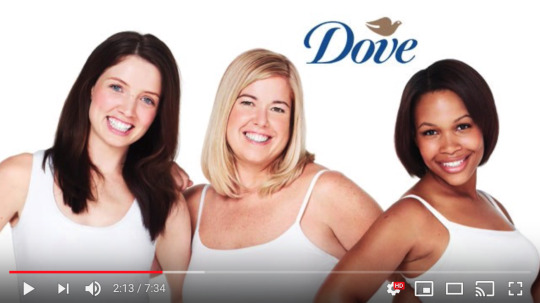
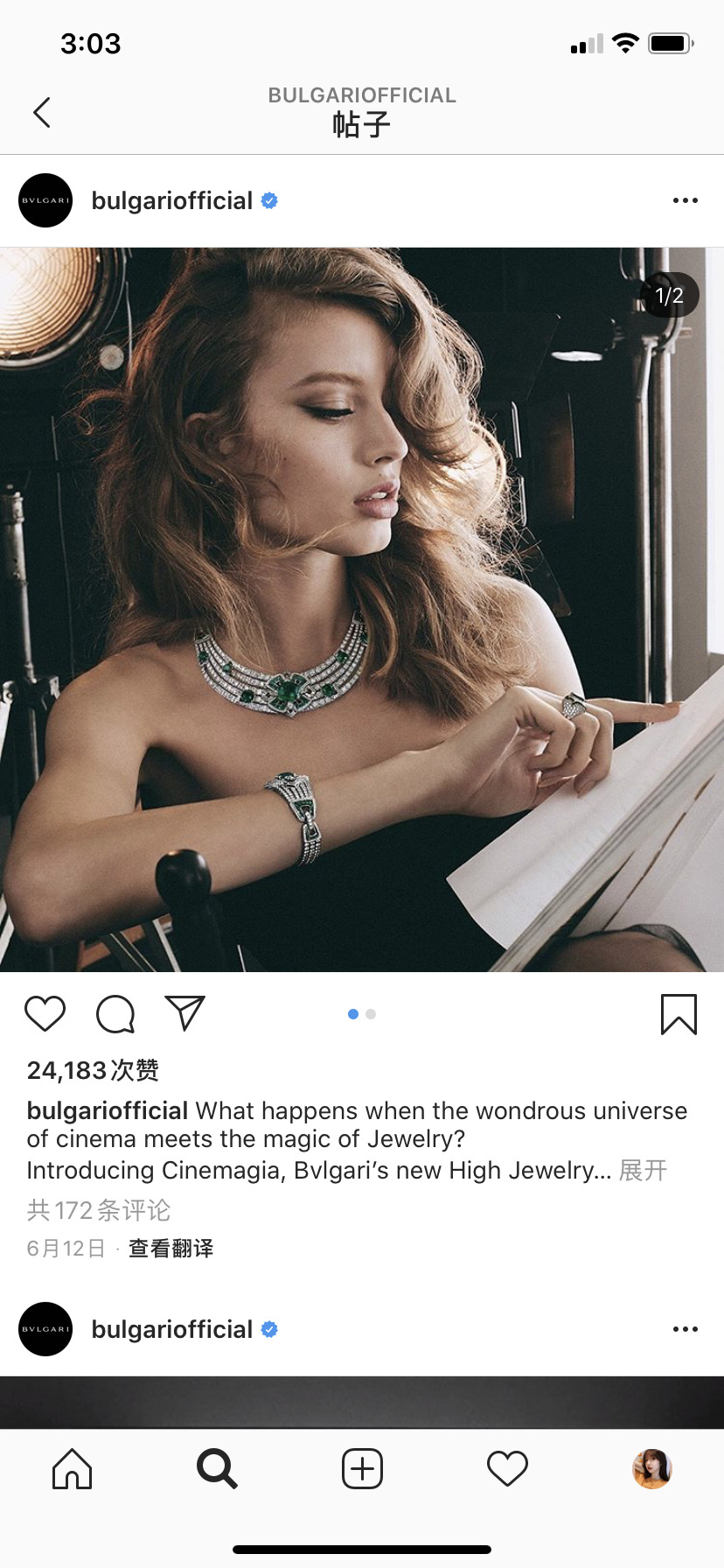
Ordinary people make consumers feel less distanced but harder to create a trend as well. However, using celebrities can make consumers better recall the brand compared with using ordinary people.
As Kate mentions that choosing ordinary models is still an extension of commodity, the purpose is not purely encouraging people without perfect body shapes. Choosing ordinary people as models is still a method to gain likes from the public so that they can make more commercial profits. It is rarely because the industry wants to make changes but they just adapt to the market. It is an easy way to gain consumers’ trust since ordinary models are projections of us normal people, which means consumers will quickly identify with the brand. But what business owners want is that consumers pay for the value of “social equity, gender equity” added based on the product but has no practical use at all.
Kate also discusses “realist fashion”, and I think what we hate is not perfection but fakeness.
https://www.youtube.com/watch?v=bvVe-tGLRvo
The link is a Chanel No.5 perfume advertising inviting supermodel Giselle. I admit that I enjoy watching it because their appearances are pleasant to be looked at. Professional models make the advertisement have aesthetic values but what I don’t like is the storyline: an independent woman quits surfing immediately in order to better take care of her husband and run after him because she is touched by the little notecard and the perfume he left. The ad is too romantic without considering what choice should women make in real life and ignore the struggles women may go through in reality before making such decisions. People hate meaningless. Advertising should make consumers feel something such as the dynamic relationships women have with the world and the change in social responsibilities. Instead of merely presenting the product, consumers now are more curious about what can be brought through the product. No matter how photographers try to assimilate with everyday life, they still have to present with artistic values, and using professional models can help with that.
Next, social media helps break the boundary between ordinary people and the fashion industry to some extent. The idea of “Non-professional models reflects a simultaneous obsession with manufacturing celebrities out of ordinary people”(Rhodes) fascinates me. For example, The appearance of street fashion differs itself in high fashion by allowing ordinary people to participate, especially combining with social media. Consumers can tag the official account on Instagram and they have the chance to be posted on the official account. It is a clever way to attract more consumers and save the cost of having professional models. It makes people believe that they can own the fashion lifestyle by just simply purchase a hoodie.
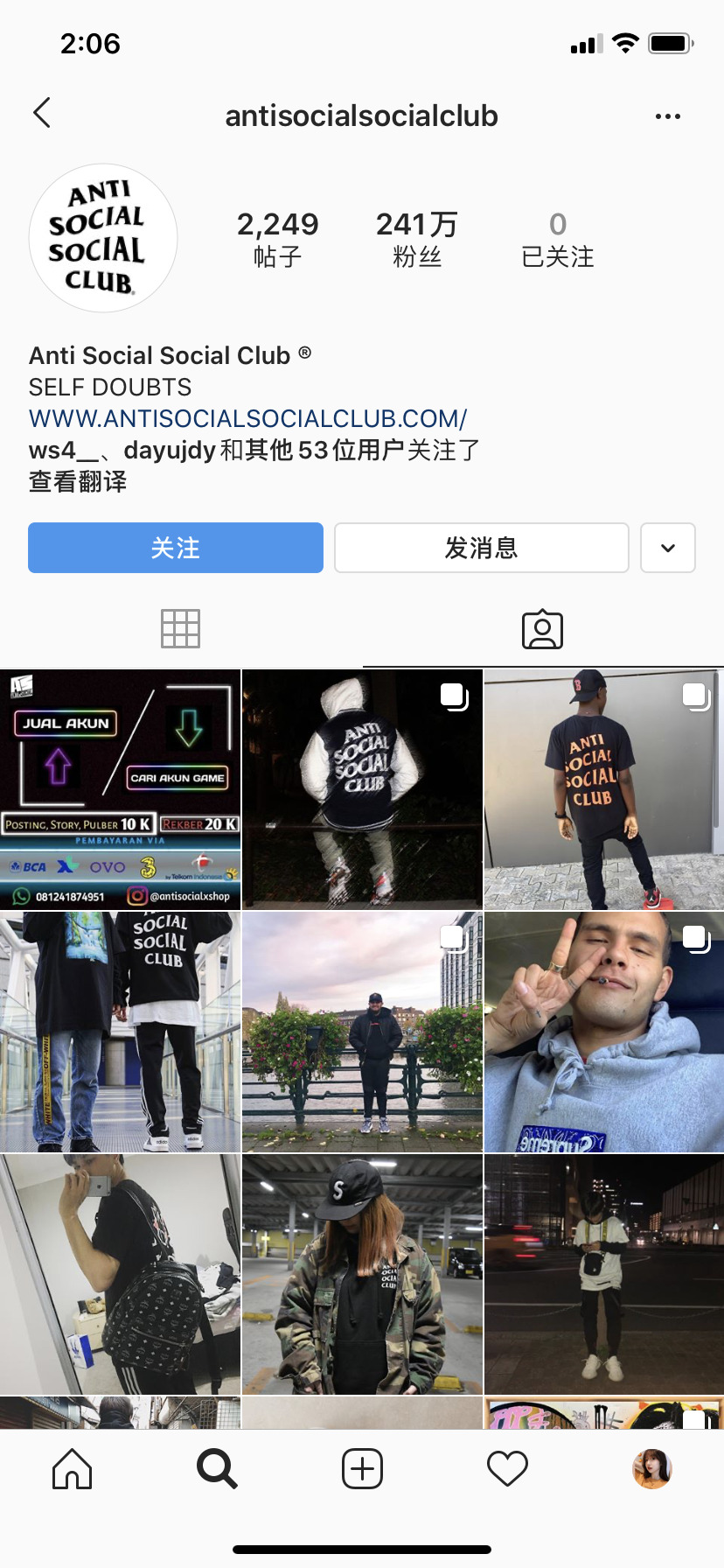

https://instagram.com/antisocialsocialclub?igshid=1pdwigmee31tk
Bloggers/ Vloggers also utilize social media to fulfill ordinary people’s desire to see the potential of manufacturing celebrities out of ordinary people. Take make-up tutorial videos as an example, fashion bloggers usually are not afraid to show their faces without makeup. Unlike celebrities who have to be perfect every second in the public’s view, bloggers/vloggers act like friends who teach girls to be beautiful and grow up together. https://www.youtube.com/watch?v=60YkNkqzoRU every time I watch their videos, I can see my potential to be prettier, which Agnes defined in the article as “process of becoming”.

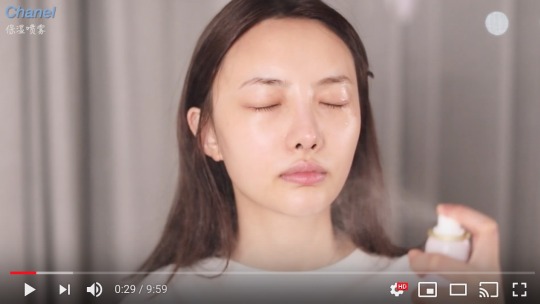
However, it is not a self-empowerment but a loss of control since other people have a saying of the trend we have to follow since we make decisions based on others’ feedback. The author claims “ever-present prompt for its affirmation” in the article, and I like the expression of calling it “prompt” since females have to fill out the answers all the time, and then they score themselves. The blog/vlog culture consistently creates new standards that people will never fill out all the answers. How to take a photo for your ice cream: holding it in front of the beautiful view; how to introduce your outfit: holding a camera blocking your face and talk to the mirror; how to spend your spare time before going to bed: light up a candle and take a photo of you holding a book saying “goodnight” on social media...We have to live a life fulfilling some formulas all the time. It is pathetic for us to still falsely claim that we achieve the goal of controlling our lives but keep pursuing one goal after another with endless ripples. And I hope there comes the moment when we have more empathy for ourselves.
References:
Rhodes, Kate. The Elegance of the Every day: Nobodies in Contemporary Fashion Photography. Fashion as Photograph. Date of access: November 12, 2019.
Rocamora, Agnes. Personal Fashion Blogs: Screens and Mirrors in Digital Self-portraits. Fashion Theory: The Journal of Fashion, Body, and Culture.. 15:4, 407-424. Routledge: Taylor& Francis Group. April 21, 2015.
0 notes
Text
Fashion: The “Unordinary” Ordinary Aesthetic
When we used to think of high-fashion, we thought of celebrities, high end models and famous people who had the privilege to strut in avant-garde fashion and were dressed by the most coveted designers for big events and galas such as the Oscars and the Met Gala or the most prominent magazines and photoshoots such as Vogue.
Yet, Kate Rhodes explains in “The elegance of the Everyday: Nobodies in Contemporary Fashion Photography,” that the fashion industry began to solicit non-professional models in order to market the ‘everyday’ look as an alternative lifestyle or image within fashion to capitalize on since the late 1980’s and onward (2008). This became a way for high fashion photographers to include a new type of aesthetic to their work – by including elements of imperfection in their work that deviated from the ideals of what a perfect model should look like, they in turn created a more rugged and down-to-earth imagery style of fashion that people began to embrace and that was used for marketing purposes later on (Rhodes, 2008). Not everyone aligned with the bourgeoise practices of only the rich, famous and beautiful individuals within high fashion, yet they still wanted to participate in fashion in a realistic way through alternative imagery and non-professional models. And now, even more inclusion within the fashion industry is visually being accounted for, with non-conventional models being placed in front and center stage where major fashion discussions are taking place.
Fashion producers caught onto this trend and started using it to their advantage. Rhodes points out that “The very ordinariness of these people stands for reliability in the products they market, while quirky or quaint looks provide the memorable twist to a new produce size…” (2008). Companies such as Zara and H&M have used these marketing points to build huge brands and profits over the years, especially within the world of fast fashion. These companies borrow looks and styles that are likened to (and sometimes exact mimics of) higher end fashion brands to give people an idea that they are buying into quaint fashion and new looks off the runway. Then, these companies photograph regular (or non-professional) models to wear the clothes and the brand which makes consumers feel that the clothing is accessible and made well enough for everyday life as it comes. These companies don’t want people thinking that they can only wear the item once and it must be cared for like Gucci or Prada and so by using imagery of regular people, the barrier of ‘this is too nice to wear and buy constantly’ is broken and erased from consumers’ minds.
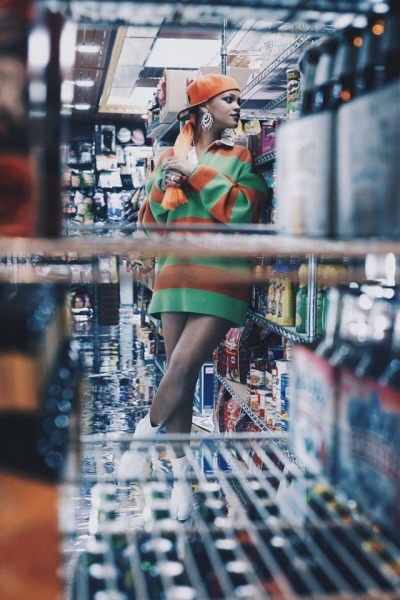
Also, Rhodes states that the idea of fashion photography has also changed in ways that allow for greater realism to take place (2008). People aren’t always framed in perfect situations; they can be photographed in slummy and grimy situations, naked and bruised or even in detestable backdrops if need be in the name of fashion. One of really popular ones is models (professional and otherwise) being shot in liquor stores as the backdrop in certain photo shoots. In 2017, Rihanna did a realist photo shoot in a liquor store for the fashion spread in Paper Magazine in 2017. The photo above is one of the shots done during her photoshoot. It takes a high profiled celebrity who has been celebrated for her personal sense of style and places her in a non-glamorized or fashionable space for the sake of fashion and the ‘regular person’s aesthetic’. Other non-professional models have been shot in this way as well. This type of fashion photography brings together both fashion rules of going against the grain while placing the subject in everyday situations that appeal to a larger audience range.
Also with the rise of social media, more people have found it easier to partake in fashion culture by creating their own definitions and imagery in what fashion should look like for ordinary people through online fashion blogs, and now more than ever, Instagram and other visual social media platforms. As Agnes Rocamora explains in “Personal Fashion Blogs: Screens and Mirrors in Digital Self-Portraits, ” “…the fashion blogosphere has asserted itself as a key space for the production and the circulation of fashion discourse” (2011). These influencers and bloggers of the digital age help influence fashionable trends and looks with #OOTD & #OOTN as well as providing their followers with all kinds of styles and aesthetics. Rocamora also states that the digital space of personal fashion bloggers are regular people who share a more realistic view of fashion; from showing off new pieces they bought that were trendy and popular, finding older vintage pieces from going thrifting to how they style certain clothes for different body shapes.

A few of my favorite fashion bloggers include people like Nava Rose, who specializes in DIYs, thrifting and sewing/creating one’s own fashionable clothes from different fabric and materials found in the Downtown LA Fashion district, or Kim XO, who is a fashion stylist on YouTube who shares how to style certain clothes the best for each body type and aesthetic. This picture is of one of Nava Rose’s DIY projects where she made a leather skirt enhanced with buckles and chains and paired it with other items in her wardrobe to create a BTS/ K Pop aesthetic with her own twist. The outfit looks like it could be created and styled for a music video as it has elements of unique fashion and doesn’t look like something that can be bought in a store without some thought being put into it.
People like these help to demystify the far off ideology of fashion being only for the privileged while making it fun, accessible and affordable to regular ordinary people who want to feel and dress like a million bucks but will never have the social status to wear high-fashion and expensive things on an everyday basis.
As a college student especially, I like the fact that the visual aesthetic of fashion is changing to include the looks and vibes of regular people and their lifestyles. Dancers, skaters, streetwear and professional chic are all aesthetics that regular people use on a daily basis. However, with the use of social media, and regular people having a voice and being able to influence trends within fashion, higher fashion and fashion photographers must continue to pay attention, because regular people like ourselves definitely have sense of fashion, and that opens up whole new markets, identities and aesthetic on it own.
0 notes
Text

By selecting the critical theory lenses, you’ve chosen to look at clothing consumption norms from a critical perspective, searching for answers to why things are the way they are. A critical perspective is needed to understand the underlying issues associated with (over)consumption and why they occur in order to encourage more sustainable consumption.
In qualitative research, critical theory focuses on praxis and dialogue while questioning long-held assumptions about how the world works. It encourages researchers to use different ideological approaches, considering capitalism, race, gender, social class, and other frameworks for interpretation.
Karl Marx’s theory of historical materialism helps to explain how consumption practices are linked with human evolution and the development of modern society. As a methodology, historical materialism argues that history is the result of material conditions rather than ideals. This suggests that tangible, material items have the ability to impact our thoughts and ideas, thus forming the basis of our perception of consumption norms. Marx’s theories can also be used to critique capitalism—the system responsible for much of what we consume—therefore providing new perspectives into what really controls our desire to consume and perceived needs.
Clothing consumption norms can also be viewed through the critical lens of feminism, as the purchase and care of clothing in the Western world has historically been linked to “women’s work.” Finally, when speaking about consumption and labor, it’s impossible to ignore how these also relate to racial inequalities. Therefore, critical race theory is an invaluable tool for viewing how consumption norms are formed through capitalist economies and at whose expense.
While exploring the resources below, try asking yourself these questions:
1. Which ideologies are being used to examine consumption norms in each article/book?
2. How do these different ideologies impact your view of this topic?
3. How can critical inquiry be used to promote social justice and encourage changes (instead of just providing interpretations)?
Read:
BBC News. (2020). Attenborough: 'Curb excess capitalism' to save nature. https://www.bbc.co.uk/news/amp/science-environment-54268038?__twitter_impression=true
Danius, S., Jonsson, S., & Spivak, G. (1993). An Interview with Gayatri Chakravorty Spivak. Boundary 2, 20(2), 24-50. doi:10.2307/303357
Loehlin, J. (1999). From rugs to riches: Housework, consumption and modernity in Germany. Oxford: Berg.
Smith, W. (2003). Consumption and the making of respectability, 1600–1800. Routledge.
Stigler, G., & Becker, G. (1977). De Gustibus Non Est Disputandum. The American Economic Review, 67(2), 76-90. Retrieved November 28, 2020, from http://www.jstor.org/stable/1807222
Strasser, S. (1982). Never done: A history of American housework. Pantheon Books.
Sullivan, A. (2016) Karl Marx: Fashion and capitalism. In Rocamora, A., & Smelik, A. (Eds). Thinking through fashion: A guide to key theorists. London: I.B. Tauris.
0 notes
Text

By selecting the post-structural lenses, you’ve chosen to interrogate the all-embracing frameworks of Marxism, liberalism, psychoanalysis, and so forth. This epistemological stance encourages you to view clothing consumption norms through the ways in which power and knowledge are created, specifically through language and discourse. It challenges you to look a little closer at how people talk about consumerism and the ways in which this discourse is used to construct identities.
In qualitative research, post-structural approaches draw from ethnographic and phenomenological traditions. These reject the idea of a “core self,” instead viewing subjectivity as something that is continually changing and influenced by social relations.
Post-structural thinkers provide a wide breadth of ways to look at clothing consumption norms, even if the connections are less obvious than other theoretical frameworks. For example, the work of Michel Foucault can be used to examine how consumerism and norms are linked to a “hierarchy of knowledge” and épistémè (background assumptions forming the basis of knowledge). Pierre Bourdieu’s idea of “habitus” contributes to the study of consumption norms as a way to bridge the effects of resources, past experiences, tastes, and aspirations. Moreover, his writings on “social space” invite us to think about the impact of moving more production offshore, thus creating greater distance (geographically and socially) between consumers and the production process. Gilles Deleuze and Félix Guattari portray capitalism as a “desiring-machine” in their shared work, thus adding further context to the ways that consumption norms are shaped by systems of power.
While exploring the resources below, try asking yourself these questions:
1. How can clothing consumption norms be related to power structures?
2. In which ways do these structures attempt to emanate control over consumer behavior?
3. How is the production of consumption norms impacted by racism or heteronormative ideals, and how can we actively deconstruct these notions?
Read:
Bourdieu, P. (1984) Distinction: a social critique of judgement and taste. London: Routledge.
Consumption and Social Stratification: Bourdieu's Distinction (The Association for Consumer Research): https://www.acrwebsite.org/volumes/7565/volumes/v21/NA
Corrigan, P. (1997). Theoretical approaches to consumption. In The sociology of consumption: An introduction (pp. 17-32). London: SAGE Publications Ltd. doi: 10.4135/9781446216903.n2
Goodchild, P. (1996). Deleuze & Guattari: An introduction to the politics of desire. London: Sage.
Grosz, E. (2008). Chaos, territory, art: Deleuze and the framing of the earth. New York, NY: Columbia University Press.
Jackson, A., & Mazzei, L. (2012). Michel Foucault. In Thinking with theory in qualitative research: Viewing data across multiple perspectives. New York, NY: Routledge.
Tynan, J. (2016) Michel Foucault: Fashioning the body politic. In Rocamora, A., & Smelik, A. (Eds). Thinking through fashion: A guide to key theorists. London: I.B. Tauris.
Reckwitz, A. (2002). Toward a theory of social practices: A development in culturalist theorizing. European Journal of Social Theory, 5(2), 243–263. https://doi.org/10.1177/13684310222225432
0 notes